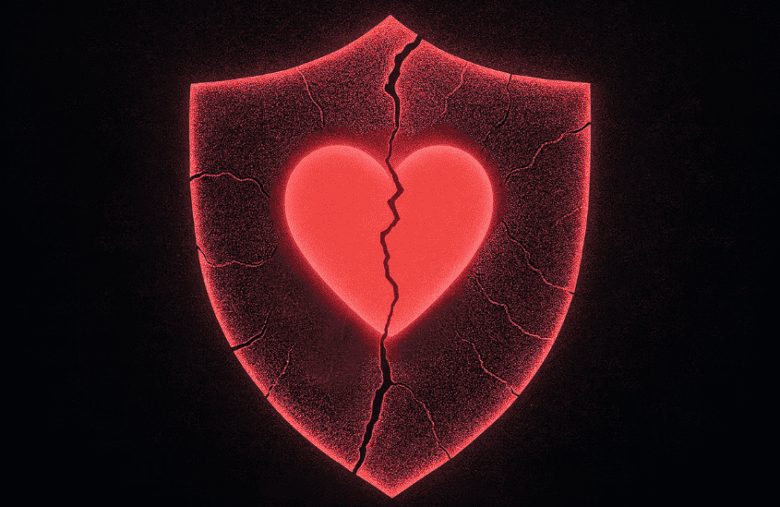Why Dating Apps Are Unsafe: Cybersecurity Risks Every User Must Know
The rise of online dating has connected millions of people worldwide. Apps like Tinder, Grindr, Hinge, and Match.com are household names, offering convenience and endless options for romance. But beneath the glossy marketing lies a serious problem: most dating apps are unsafe and repeatedly fail to meet modern cybersecurity standards.
A recent cybersecurity report reviewed 24 of the largest dating platforms and uncovered alarming findings: 75% of the major platforms received a poor security rating (D or F grade), meaning they expose users to serious risks of data breaches, stalking, identity theft, and fraud.
This article reveals why dating apps are unsafe, highlights case studies of when systems fail, and provides practical tips to protect your privacy in today’s digital dating landscape.
Why Cybersecurity Matters in Dating Apps
When you log into dating apps, you share some of the most sensitive information you own. Unlike other social networks, dating platforms often hold:
– Your full name and birthdate
– Private conversations and intimate photos
– Sexual orientation and relationship preferences
– Payment details for subscriptions
– Location data tracked in real time
If this information is stolen during a breach, the fallout can be devastating. Stolen chats can be used for harassment, leaked photos can ruin reputations, and stolen credit card details can lead to financial loss.
With apps like Tinder and Match Group apps serving millions of users, weak digital security doesn’t just affect individuals — it’s a large-scale social issue. Without strong encryption protocols like TLS and SSL, without proactive software patching, and without robust email security, users are left dangerously exposed.
New Study Finds 75% of Dating Apps Are Unsafe
A new cybersecurity study by the Business Digital Index analyzed 24 of the largest dating platforms. The cybersecurity report showed that three-quarters of these apps had unsafe or outdated protections, giving them a poor security rating.
– High-risk apps: Tinder, Grindr, Hinge, and eHarmony
– Critical risk apps: Christian Mingle, Match.com, and AdultFriendFinder
– Better performers: Only Bumble and EliteSingles reached a “B” grade, but even these still fell short of “A” level safety.
Who Conducted the Study and How Dating Apps Were Tested
The Business Digital Index is a research group that evaluates public-facing security across industries. They performed passive scans of major platforms (no hacking involved) to measure:
– Software patching speed
– Data breach history (has the company been breached before?)
– Web application security strength
– Email authentication (SPF, DMARC, DKIM)
– Use of encryption protocols like TLS and SSL
– System reputation and hosting quality
This methodology allowed them to compare eleven platforms and seven major platforms head-to-head, providing the most comprehensive cybersecurity report on online dating to date.
The Grading System Explained
Each app was scored from 0–100 and assigned a grade (A = secure, F = unsafe). Most apps scored in the D or F range. This means dating apps are unsafe because they lack essential protections against common attack vectors like SQL injection, API vulnerabilities, and phishing schemes.
Which Dating Apps Are Unsafe and Failed Security Tests?
The study revealed disturbing results:
– High risk: Tinder, Hinge, Grindr, eHarmony
– Critical risk: Christian Mingle, Match.com, AdultFriendFinder
– Medium risk: Bumble and EliteSingles (better than others, but not perfect)
Other apps like Plenty of Fish, SilverSingles, and Badoo were also tested, but none achieved the highest grade.
The key takeaway? Even major platforms like Match Group apps, which control popular names like Match.com and OkCupid, repeatedly rank as a critical risk.
A History of Unsafe Dating Apps and Data Breaches
Data breaches in dating platforms are not new, and history proves that dating apps are unsafe.
Ashley Madison
The infamous Ashley Madison breach exposed 30+ million accounts, ruining marriages and leading to extortion schemes. It showed the world how dangerous a breach of personal dating data can be.
Zoosk and Coffee Meets Bagel
– Zoosk was breached by hacker group ShinyHunters, leaking 24 million records, including income and political views.
– Coffee Meets Bagel admitted hackers stole 6 million accounts on Valentine’s Day — a PR disaster.
Tinder & Incomplete Encryption
A security company discovered that incomplete encryption allowed attackers to reconstruct user profiles and swipe sessions. This highlights how apps like Tinder can leave users open to attack vectors if they fail to update their encryption protocols.
Why Dating Apps Are Unsafe: Common Cybersecurity Weaknesses
Why are so many dating apps unsafe? The study revealed consistent failures:
– Weak email security and a lack of strong email authentication safeguards leave apps open to phishing.
– Poor web application security, exposing apps to injection and script attacks.
– Outdated TLS and SSL settings, allowing interception of sensitive data.
– Weak system reputation due to insecure hosting.
– Failure to prioritize software patching leaves apps vulnerable to known exploits.
For example, eharmony and Tinder both had poor results in past scans due to outdated encryption.
The Risks When Dating Apps Are Unsafe for Users
The risks of unsafe dating apps are not just technical — they have a real human impact:
– Privacy invasion: Hackers exposing sexual orientation, photos, or conversations.
– Financial fraud: Stolen credit card data from major platforms.
– Harassment & blackmail: Criminals targeting vulnerable users with threats.
– Domain impersonation: Fake sites mimicking dating platforms to steal logins.
When systems fail, it is the users who pay the price.
How to Stay Safe on Dating Apps
Practical Security Tips for Using Dating Apps Safely
Even if dating apps are unsafe, users can take proactive steps:
– Use unique, strong passwords and enable two-factor authentication.
– Create a burner email for online dating accounts.
– Check for apps with strong email authentication (SPF, DMARC, DKIM).
– Always connect through a VPN to protect your IP and location.
– Be cautious about sharing your birthdate or workplace.
– Avoid clicking on links in messages — many are phishing attempts.
These simple steps can significantly reduce your risk when using major platforms.
Which Dating Apps Are the Safest in 2025?
While no app scored an “A” grade, some fared better than others:
– Bumble and EliteSingles: Both reached a “B,” indicating stronger digital security practices like faster software patching and improved email security.
– Silversingles and Badoo: Tested but did not perform well enough to be considered safe.
– Match and AdultFriendFinder: Ranked among the least secure.
The takeaway: safer options exist, but users should not assume even top dating platforms are secure.
The Future of Dating Apps and Cybersecurity Standards
With growing breaches, cybersecurity in dating platforms is under pressure. Regulators may soon require stronger protections for major platforms. Future improvements may include:
– Stronger encryption protocols, like end-to-end messaging
– AI-driven detection of attack vectors
– Faster software patching cycles
– Improved web application security
Companies that fail to adapt risk losing trust in a market where users are becoming more security-aware.
Key Takeaways: Most Dating Apps Are Unsafe, But You Can Stay Protected
– 75% of dating apps are unsafe, according to the cybersecurity report.
– 24 of the largest dating platforms were tested, and most scored poorly.
– Even major platforms like Tinder, eHarmony, and Match.com are at high risk or critical risk.
– Only Bumble and EliteSingles scored better, but no app achieved an “A” grade.
Protect yourself: use strong habits, be aware of phishing, and choose apps with better digital security.
Bottom line: Until major platforms prioritize user safety, your personal digital security is your responsibility.



